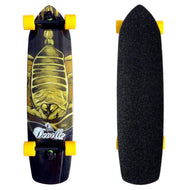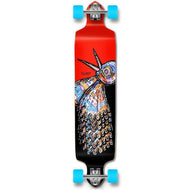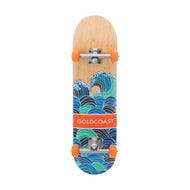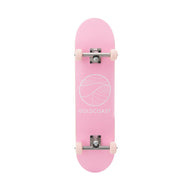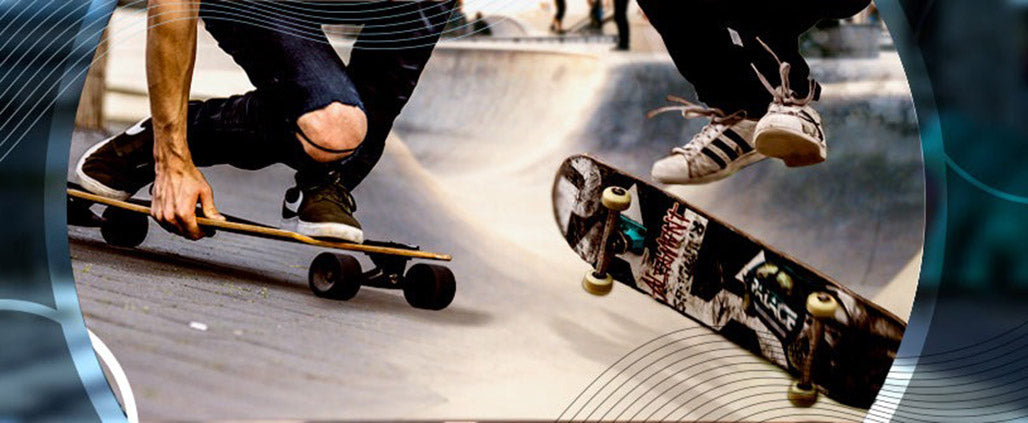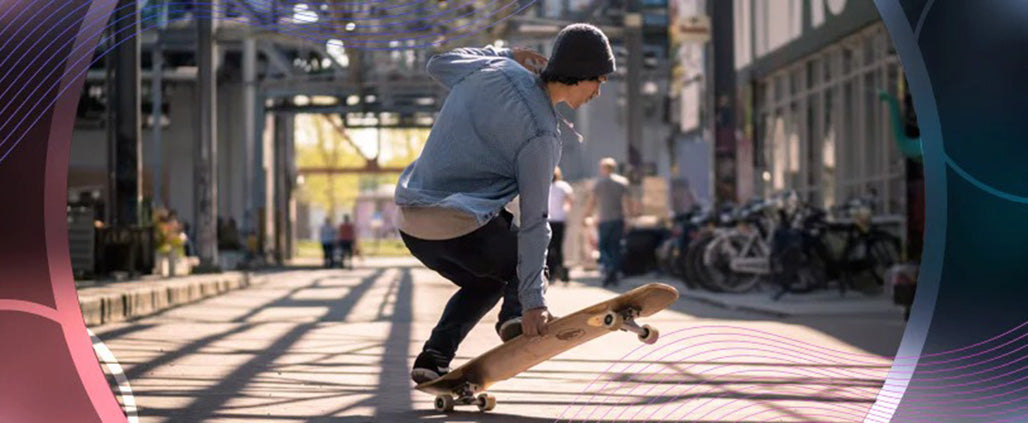
5 tips to choose your skateboard wheels
5 Skateboard wheel tips!
If you already have your first skateboard, questions will arise such as: What types of wheels are there? Are they all made of the same material? Why should I buy bigger or smaller ones? Does the hardness influence the skating? There are many questions that come to light based on the wheels of a board, but if you have the knowledge about these, when you go to your favorite store to buy them, it will be easy to choose them.
The first thing to know is that practically all skateboard wheels manufactured today are made of polyurethane, a material resistant to abrasion, with good grip and cheap. The idea of using this tough polymer came from Frank Nasworthy in the early 70's and revolutionized the skateboarding world. Before using this material, metal or ceramic ones were used, which lasted only a few hours and offered much less grip.
It is here where you must take into account three determining factors that are almost always indicated on each wheel: 58mm - 20mm contact 101A. Or, in other words, diameter (58mm), a factor that has to do with the shape (20mm contact) and hardness (101A).
Diameter
From here, we could say that the most common range is from 50 to 56mm. From 50 to 53 are ideal for the street because they are smaller, weigh less and when carrying the skate lower and chopping the tricks, it is faster. The 53 could be said to be the most all-terrain. And from 53 to 56, on the other hand, it offers more speed and resistance to the irregularities of the terrain, as well as for curbs or large railings. For beginners, it is advisable to buy 52 to 56.
Between 56 and 60 millimeters, which are already considered large skateboard wheels, are also common for skating ramps. They allow both speed and height and respond well to uneven terrain.
Finally, beyond 60 would be wheels for longboard, cruiser or surfskates.
Shape
- Narrow: they have a narrower outer edge and therefore the base of contact with the ground is smaller, have less friction, and even when chopping and scraping the trick they have a tendency to turn from the first moment. They are used for more technical, street skateboarding.
- Wider: wider wheels, resistant and stable, very versatile. Ideal for beginners, park, bowl, and fast skating. Although they are also slightly rounded, it is not until the end. For tricks on curbs, for example, they help to make the fit more perfect.
- Classic: Almost exclusively for cruiser use. Practically rectangular if you look at them from the front. Total support of the wheel on the ground. They weigh more but give a lot of stability.

Hardness
Roughly speaking, you could say that the harder a wheel is, the more speed, less grip and therefore better for the ramp, skateparks and technical tricks on more or less smooth terrain. And more slides, if that's of interest to you. On the other hand, the less hard, the less speed, the more grip and optimal for a variety of terrains and irregularities such as rough asphalt or tiles. The filmers, for example, wear them less hard.
The most common range of skate wheels is from 95A to 103A. From 95A to 100A are more for the street, for a spot that does not have a perfect ground but thanks to the fact that it is not excessively hard, the wheel does not transmit so much the vibration of the ground. If they go over 100A they are more intended for perfect floors or skateparks where there is no such vibration.
Texture
Color
With all these tips you can go to our store to get advice and try different types of wheels. Just the fact of skating for hours and hours will lead you to know what your perfect wheels are. Trial, error, trial, error, trial, trial, success.
If you liked this content, don't forget to save the skate blog in your favorites and visit our page for more content of your interest.

